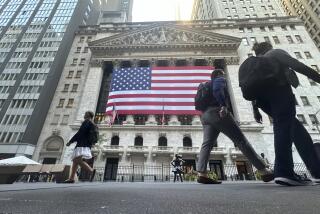Egg-citement Mounts With Forbes-Soviet Faberge Agreement
- Share via
In a coup she called “the glasnost of the Faberge eggs,” Mayor Maureen O’Connor announced Friday that she has won approval from both the Soviet Union and magazine publisher Malcolm Forbes to exhibit their collections of rare Faberge eggs together during next year’s planned Soviet arts festival.
Forbes, who owns 12 of the bejeweled artworks, agreed Friday to send one egg for every egg the Soviets show at the festival, planned for 1989. Forbes will loan all 12 of his eggs if the Soviets agree to exhibit their entire collection of 10 eggs, according to an agreement made public by the mayor’s office.
The exhibit would be the first joint display of the collections since at least 1917’s Bolshevik Revolution that toppled Russia’s czars, a mayoral spokesman said.
“This is exciting news for San Diego,” O’Connor said. “This is the first time they’ve ever been shown together. The Soviets are talking about six to eight eggs and Forbes is talking about matching.”
Gold and Jeweled Icons, Too
O’Connor also said that the Soviets had confirmed plans to send a collection of gold and jeweled icons from the the Georgian state fine arts museum in Tbilisi and that a representative of the Soviet Ministry of Culture would be in San Diego on Oct. 10 to continue talks on the festival.
Though funding for the festival is still uncertain, the San Diego City Council approved the idea Monday, sealing a deal that O’Connor negotiated with Soviet officials during an 18-day trip to the Soviet Union in June and July.
Though some critics say that the organizing effort for the festival is inappropriate at a time when the city faces tough decisions about sewage treatment, growth management and other issues, O’Connor has made the festival the centerpiece of a self-declared “year of the arts.”
Crafted from gold and layered with diamonds and other gems, the Faberge eggs were fashioned in the late 1800s and early 1900s by Russian goldsmith Carl Faberge and his brother, Agathon. The eggs, which often depict miniature scenes and designs, were presented each year to czarinas by the Russian czars, beginning with Alexander III.
While no site has been picked for display of the eggs, O’Connor promised that the artworks will “be easily accessible to San Diegans. San Diegans are going to be able to afford to go see this, that’s my first priority.”
Tourists might be charged more to see them, O’Connor said.
“This kind of exhibit is going to have interest locally, but also in California and elsewhere,” she said. “So we’ve got to make sure we have a place that can handle the crowds.”
More to Read
Inside the business of entertainment
The Wide Shot brings you news, analysis and insights on everything from streaming wars to production — and what it all means for the future.
You may occasionally receive promotional content from the Los Angeles Times.









